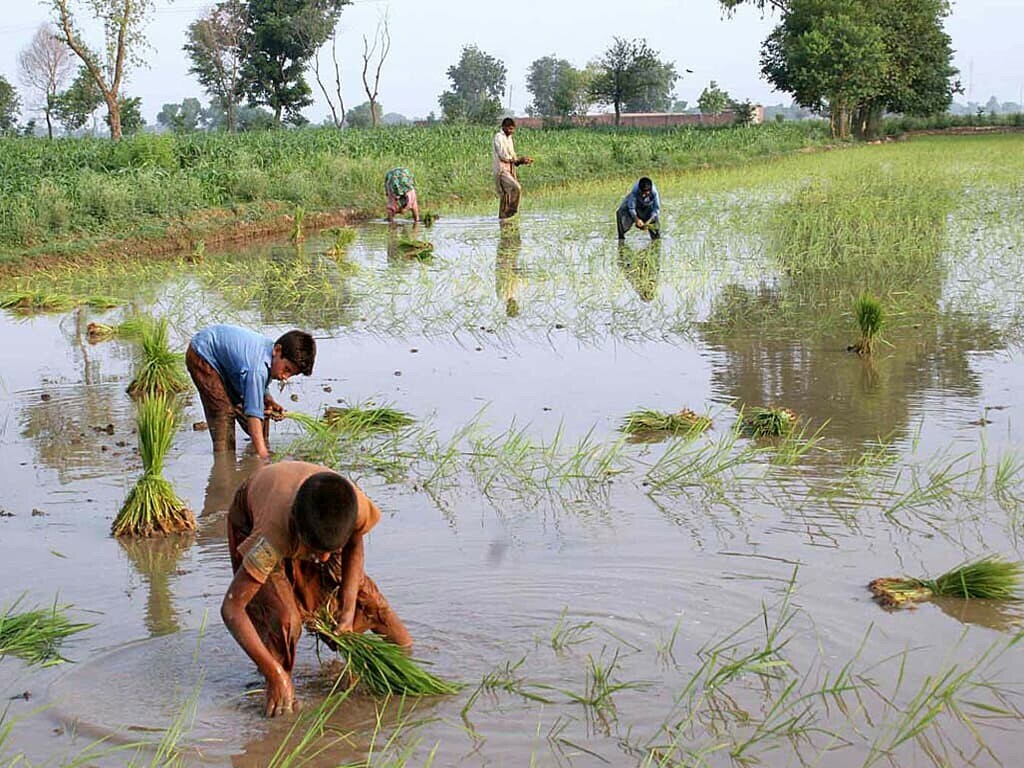Tags
Pakistan’s water crisis: the cost of sugarcane and rice
Mohsin Leghari

Pakistan is on the brink of a worsening water crisis, one that threatens its inter provincial relationship, agriculture, economy, and food security. Ranked among the most water-stressed nations in the world, it faces the alarming prospect of depleting its water resources within decades.
Yet, despite this growing threat, the country continues to cultivate water-intensive crops like sugarcane and rice, placing an unbearable strain on its dwindling supply.
Inefficient irrigation systems, unchecked groundwater extraction, and weak policies only accelerate the depletion of water, leading to soil salinity and water-logging.
Without urgent action to curb excessive water use, Pakistan risks not only environmental disaster but also economic collapse and widespread food shortages.
Nowhere is this crisis more damaging than in Punjab, Pakistan’s agricultural heartland, where groundwater is being extracted at an unsustainable rate. Each year, Punjab draws an astonishing 50 million acre-feet (MAF) of groundwater — far exceeding the nation’s total surface water storage capacity of just 13.5 MAF.
This relentless extraction, worsened by erratic rainfall and sole reliance on the Indus River Basin, is largely driven by the cultivation of sugarcane and rice.
Farmers, in a desperate bid to sustain their water-intensive crops, drill deeper wells, often tapping into saline water. This not only depletes aquifers but also degrades soil quality, threatening future agricultural yields. If this over-extraction continues unchecked, Punjab could face severe water shortages that would cripple the country’s food production and put millions of livelihoods at risk. Aquifer that was built in thousands of years is under extreme stress
While Punjab faces groundwater depletion, Sindh battles an entirely different water crisis — one caused by excessive irrigation that is leaving vast stretches of land waterlogged and saline. Nearly half of Upper Sindh’s irrigated land is now affected, though the severity varies by region.
The Sukkur Barrage, a critical component of Pakistan’s irrigation system, loses almost a quarter of its water to inefficient distribution network and seepage, estimated to be about 4 MAF annually.
As a result, water tables continue to rise, causing water logging and bringing salt to the surface, and turning once-fertile fields into barren wastelands. The economic consequences of this mismanagement are devastating.
The World Bank estimated annual losses of $1.5 billion due to soil salinity in the early 2000s, a figure that has likely increased significantly since. As more agricultural land becomes unproductive, food insecurity worsens, forcing Pakistan to rely on costly food imports which is an unsustainable option for a country already facing economic turmoil.
Of all the water-thirsty crops in Pakistan, sugarcane stands out as one of the most inefficient yet heavily subsidized. Spread across 3.2 million acres, sugarcane alone consumes 18 MAF of irrigation water each year, accounting for about 17% of Pakistan’s total water resources.
Despite this, strong government subsidies and the powerful sugar industry continue to encourage its cultivation, even though its water efficiency lags behind global benchmarks. Pakistan’s crop water productivity (CWP) for sugarcane is just 2.28 kg/m³, significantly lower than the global average of 3.5 kg/m³. This means Pakistan requires 53.5% more water to produce the same amount of sugarcane as other countries.
Adding to the inefficiency is the fact that Pakistan’s sugarcane varieties contain only 8-10% sucrose, whereas other sugar-producing nations cultivate higher-yield varieties with 12-14% sucrose content. As a result, Pakistan needs to grow 20% more sugarcane and use 20% more water, to produce the same amount of sugar.
The refining process further exacerbates this waste. Producing just one kilogramme of refined sugar requires 1,750 liters (1.75 m³) of water. With Pakistan producing 6 million tons of refined sugar annually, this amounts to a staggering 10.5 MAF of water being consumed solely for sugar production. In a country already facing severe water scarcity, such inefficiency is nothing short of a crisis.
Rice cultivation, another major contributor to Pakistan’s water crisis, is plagued by similarly wasteful practices. Grown on 8.9 million acres, rice demands 14 MAF of water every year — primarily due to outdated flood irrigation methods.
Farmers typically apply 1,200-2,000mm of water per season, nearly double the required 800-1,000mm, leading to the unnecessary waste of approximately 3.65 MAF of water annually.
Pakistan’s rice water productivity is alarmingly low, with a CWP ranging from 0.23 to 0.45 kg/m³. In comparison, Egypt, with similar climatic conditions has implemented modern irrigation techniques, achieving a CWP of 0.79 kg/m³ by using 40% less water to grow the same amount of rice.
Pakistan’s reliance on traditional irrigation methods not only squanders valuable water resources but also depletes soil nutrients, further reducing long-term agricultural productivity.
To make matters worse, the country’s rice exports amplify the problem. Every year, Pakistan exports 4 million tons of rice, effectively sending 8.1 MAF of “virtual water” abroad. To put this into perspective, this is equivalent to 1.5 years’ worth of Karachi’s total water supply.
At a time when major cities face water shortages and groundwater levels are plummeting, exporting such vast amounts of water in the form of rice is an unsustainable and reckless practice.
Together, sugarcane and rice account for a staggering 32 MAF of annual water consumption. 18 MAF for sugarcane and 14 MAF for rice, while offering poor water productivity. Punjab’s over-extraction of groundwater is rapidly depleting its aquifers, while Sindh’s excessive irrigation is turning fertile land saline.
On the global stage, Pakistan’s inefficiency stands out, with sugarcane overburdening irrigation systems and rice exports draining valuable virtual water. The wasteful loss of 3.65 MAF on rice alone accelerates the country’s descent into a full-blown water crisis, one that threatens food security, economic stability, and millions of livelihoods.
Pakistan must come to terms with a stark reality — its most valuable resource is not sugar or rice, but water. Without immediate reforms in irrigation techniques, shifts to less water-intensive crops, and stricter water management policies, the country’s agricultural sector faces inevitable collapse. The time for action is now.
Copyright Business Recorder, 2025
https://www.brecorder.com/news/40357614/pakistans-water-crisis-the-cost-of-sugarcane-and-ricePublished Date: April 15, 2025






